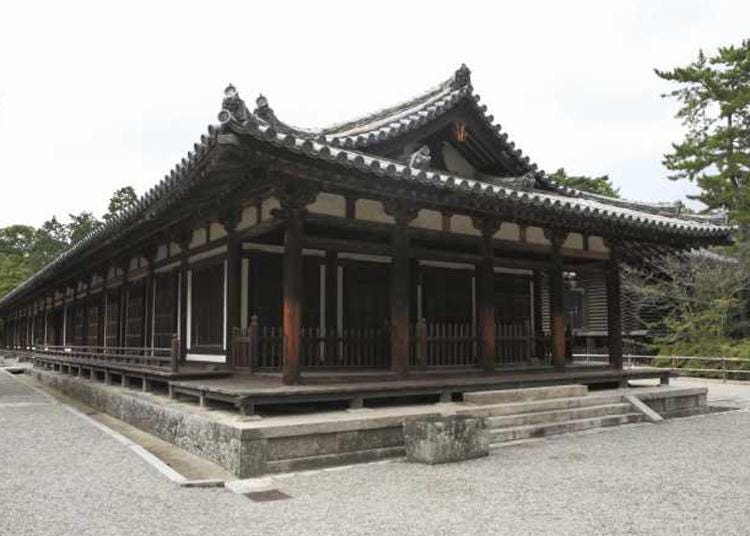
In the serene heartland of Japan lies the ancient city of Nara, a place where history and spirituality intertwine harmoniously. Nara is renowned for its rich cultural heritage, but at the core of this heritage are its magnificent temples that have stood the test of time, preserving the essence of Japanese Buddhism and centuries of architectural marvel.
In this article, we embark on a journey through Nara's spiritual landscape, unveiling the majesty of some of its most celebrated temples.
1. Todai-ji Temple
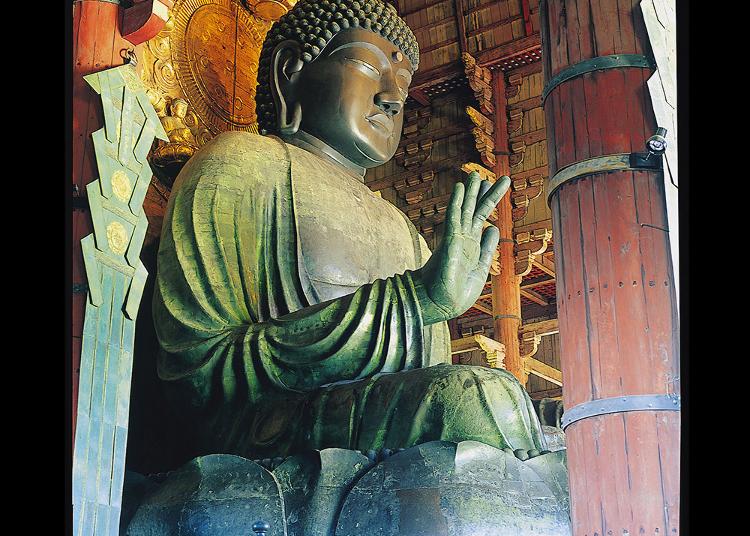
Dominating the northern expanse of Nara Park stands Todai-ji Temple, a testament to ancient Japanese grandeur founded at the behest of Emperor Shomu during the eighth century. Its centerpiece is the resplendent Rushana Daibutsu, or Daibutsu-sama, an awe-inspiring bronze Buddhist statue towering at a monumental 15 meters in height. Serenely ensconced within the Great Buddha Hall, this colossal figure shares its home with one of the world's most expansive wooden structures, measuring a staggering 57 meters in width, 50 meters in depth, and 48 meters in height.
Guarding the temple's approach are the formidable Kongo Rikishi, embodied in two statues housed within the towering 25.5-meter Nandai-mon gate, while vigilant komainu (imperial guardian lions) stand watch, warding off intruders with their protective presence. Many of the temple's structures and cherished artifacts have achieved the esteemed status of National Treasures and Important Cultural Properties. Adding to its illustrious heritage, Todai-ji Temple has earned UNESCO World Heritage recognition as one of the eight Historic Monuments of Ancient Nara.
Enduring through the trials of two wars, Daibutsu-sama has continued to illuminate the world with its benevolent radiance. In the year 752, a momentous consecration ceremony marked its unveiling. Emperor Shomu, driven by a profound desire for universal happiness, marshaled the efforts of an astounding 2.6 million people—roughly half of Japan's population at the time—to see the temple's construction through to fruition. And, when wars ravaged the statue during the closing years of the Heian period and throughout the Warring States Period, the people rallied once more to mend its damages. Remarkably, the statue's present-day pedestal and lap remain unchanged since the Nara period, bearing witness to centuries of history.
Within the hallowed halls of Todai-ji Museum, a treasury of priceless cultural gems awaits discovery. Spanning an illustrious history of approximately 1,300 years, this repository showcases an array of temple treasures, encompassing exquisite paintings and sculptures from the Edo, Kamakura, Heian, and Nara periods. Among these sacred artifacts, the collection boasts a National Treasure: a statue symbolizing the birth of Buddha from the Nara period, as well as an Important Cultural Property—a figure of Senju Kannon Bosatsu, the Thousand-Armed Kannon Bodhisattva, meticulously crafted during the Heian period.
Venturing further within the temple complex, one encounters the venerable Hokke-do Hall, also known as the Sangatsu-do Hall, reputed as the oldest surviving structure within Todai-ji Temple. Believed to have been founded in 740, this ancient hall shelters an assembly of ten Buddhist statues, including the venerated Fukukensaku Kannon (Kannon of the Never-Empty Lasso) and a concealed Buddhist image known as Shukongojin, both of which are treasured as National Treasures originating from the Nara period.
For those seeking breathtaking vistas and photographic opportunities, Nigatsu-do Hall beckons. This sacred site plays host to the Shuni-e, or Sacred Water-drawing Festival, heralding the arrival of spring in Nara. Nestled at the foot of the mountain within the temple grounds' eastern precinct, the hall's veranda extends westward, offering an expansive panoramic panorama of Nara city. As the day draws to a close, don't miss the mesmerizing spectacle of the sun setting over the majestic Mt. Ikoma, a scene that completes the enchanting tapestry of Todai-ji Temple's enduring allure.
-

-
Address
406-1 Zoshicho, Nara City, Nara Prefecture, 630-8587
View Map -
Nearest Station
Kintetsunara Station (Kintetsu-nara Line)
20 minutes on foot
- Phone Number 0742-22-5511
-
Address
406-1 Zoshicho, Nara City, Nara Prefecture, 630-8587
2. Kairyuoji Temple

Dominating the northern expanse of Nara Park stands Todai-ji Temple, a testament to ancient Japanese grandeur founded at the behest of Emperor Shomu during the eighth century. Its centerpiece is the resplendent Rushana Daibutsu, or Daibutsu-sama, an awe-inspiring bronze Buddhist statue towering at a monumental 15 meters in height. Serenely ensconced within the Great Buddha Hall, this colossal figure shares its home with one of the world's most expansive wooden structures, measuring a staggering 57 meters in width, 50 meters in depth, and 48 meters in height.
Guarding the temple's approach are the formidable Kongo Rikishi, embodied in two statues housed within the towering 25.5-meter Nandai-mon gate, while vigilant komainu (imperial guardian lions) stand watch, warding off intruders with their protective presence. Many of the temple's structures and cherished artifacts have achieved the esteemed status of National Treasures and Important Cultural Properties. Adding to its illustrious heritage, Todai-ji Temple has earned UNESCO World Heritage recognition as one of the eight Historic Monuments of Ancient Nara.
Enduring through the trials of two wars, Daibutsu-sama has continued to illuminate the world with its benevolent radiance. In the year 752, a momentous consecration ceremony marked its unveiling. Emperor Shomu, driven by a profound desire for universal happiness, marshaled the efforts of an astounding 2.6 million people—roughly half of Japan's population at the time—to see the temple's construction through to fruition. And, when wars ravaged the statue during the closing years of the Heian period and throughout the Warring States Period, the people rallied once more to mend its damages. Remarkably, the statue's present-day pedestal and lap remain unchanged since the Nara period, bearing witness to centuries of history.
Within the hallowed halls of Todai-ji Museum, a treasury of priceless cultural gems awaits discovery. Spanning an illustrious history of approximately 1,300 years, this repository showcases an array of temple treasures, encompassing exquisite paintings and sculptures from the Edo, Kamakura, Heian, and Nara periods. Among these sacred artifacts, the collection boasts a National Treasure: a statue symbolizing the birth of Buddha from the Nara period, as well as an Important Cultural Property—a figure of Senju Kannon Bosatsu, the Thousand-Armed Kannon Bodhisattva, meticulously crafted during the Heian period.
Venturing further within the temple complex, one encounters the venerable Hokke-do Hall, also known as the Sangatsu-do Hall, reputed as the oldest surviving structure within Todai-ji Temple. Believed to have been founded in 740, this ancient hall shelters an assembly of ten Buddhist statues, including the venerated Fukukensaku Kannon (Kannon of the Never-Empty Lasso) and a concealed Buddhist image known as Shukongojin, both of which are treasured as National Treasures originating from the Nara period.
For those seeking breathtaking vistas and photographic opportunities, Nigatsu-do Hall beckons. This sacred site plays host to the Shuni-e, or Sacred Water-drawing Festival, heralding the arrival of spring in Nara. Nestled at the foot of the mountain within the temple grounds' eastern precinct, the hall's veranda extends westward, offering an expansive panoramic panorama of Nara city. As the day draws to a close, don't miss the mesmerizing spectacle of the sun setting over the majestic Mt. Ikoma, a scene that completes the enchanting tapestry of Todai-ji Temple's enduring allure.
-

-
Address
897, Hokkeji Kitamachi, Nara-shi, Nara, 630-8001
View Map -
Nearest Station
Shinomiya Station (Kintetsu-nara Line)
14 minutes on foot
- Phone Number 0742-33-5765
-
Address
897, Hokkeji Kitamachi, Nara-shi, Nara, 630-8001
3. Toshodaiji Temple
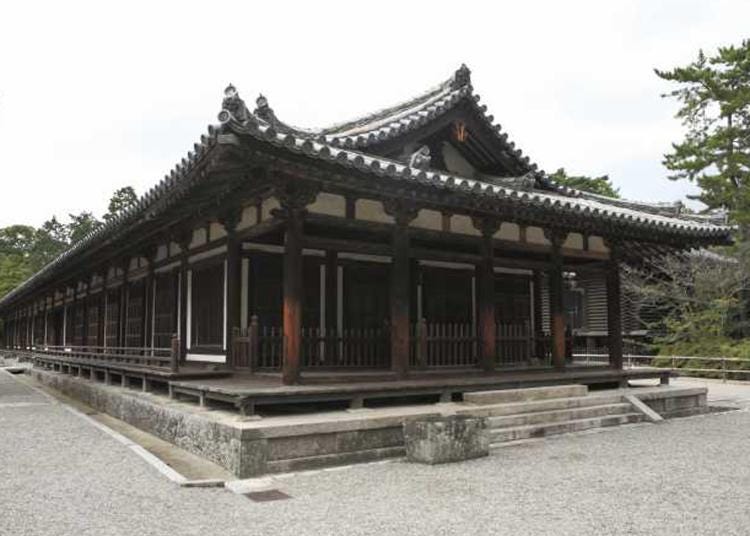
In the year 759, the renowned Chinese monk Jianzhen, having made the decision to depart from Todaiji Temple, was bestowed with the former dwelling of Niitabe Shin-no, the Emperor's son. Within these humble beginnings, he established an educational institution dedicated to imparting the teachings of Chinese Buddhism. At its inception, this site merely comprised a refurbished former residence and a lecture hall. Yet, as time unfurled its passage, it steadily transformed into a fully-fledged temple.
During the latter part of the 8th century, Jianzhen's devoted disciple Nyoho undertook the completion of the Kondo Hall, marking a significant milestone in the temple's evolution. Enduring the ravages of warfare during the medieval period and the anti-Buddhist policies of the Meiji era, this sacred place persisted and stands today as a repository of numerous Tempyo-era structures and cultural treasures, bearing witness to centuries of spiritual and historical significance.
-

-
Address
13-46, Gojocho, Nara-shi, Nara, 630-8032
View Map -
Nearest Station
Nishinokyo Station (Kintetsu-kashihara Line)
9 minutes on foot
- Phone Number 0742-33-7900
-
Address
13-46, Gojocho, Nara-shi, Nara, 630-8032
4. Gangoji Temple
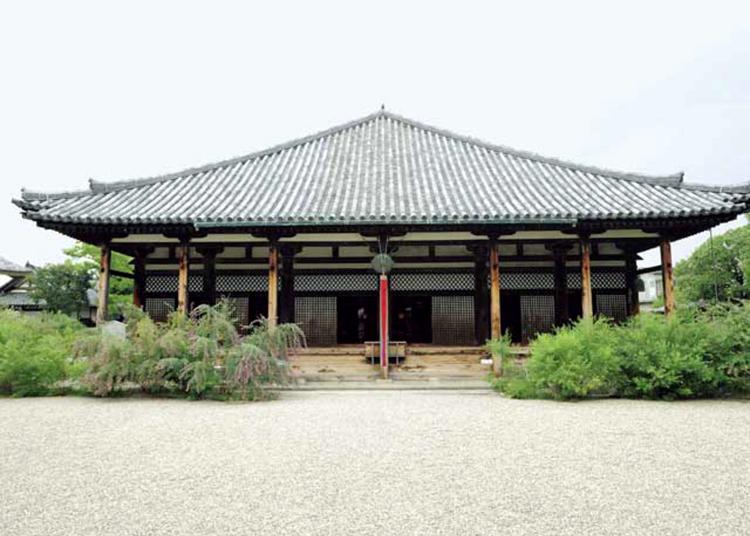
In the year 718, a significant chapter in the history of Hokkoji Temple unfolded with the relocation of the capital to Heijo-kyo, which we now know as Nara. It was during this pivotal period that Hokkoji Temple transformed into what we now recognize as Gangoji Temple. This era witnessed the temple's emergence in the company of other esteemed counterparts like Todaiji Temple and Kofukuji Temple. The temple grounds extended expansively, spanning from the current southern boundary of Saruzawa Pond and encompassing the entirety of Naramachi.
Although Gangoji Temple gradually waned in prominence during the Heian period, a resurgence occurred with the advent of Jodo Shinko sect (Pure Land Faith) adherents. They congregated at the temple's Gokuraku-do Hall, eager to behold the Chiko Mandala, an intricately illustrated panel of profound spiritual significance. As the Kamakura period unfurled, the temple evolved further, drawing not only Chiko Mandala enthusiasts but also devotees of Shotoku Taishi and Kobo Taishi.
Initiating a transformative phase in 1943, additional facilities began to sprout within the temple's precincts, eventually shaping its present-day configuration.
-

-
Address
11, Chuincho, Nara-shi, Nara, 630-8392
View Map -
Nearest Station
Kintetsunara Station (Kintetsu-nara Line)
11 minutes on foot
- Phone Number 0742-23-1377
-
Address
11, Chuincho, Nara-shi, Nara, 630-8392
5. Kojindo
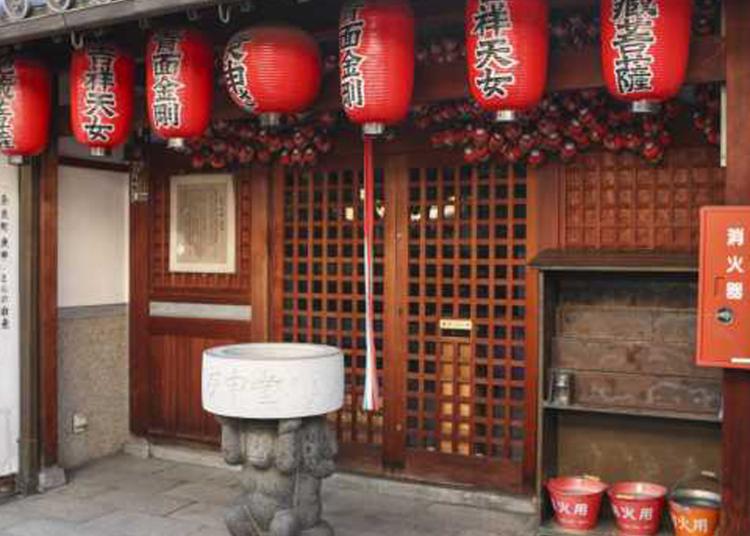
Kojindo serves as the focal point for the Koshin Shinko religious sect, renowned for its practice of suspending protective charms to ward off illnesses and misfortune. Within the hall's sacred confines, one can venerate a standing statue of Shomen-kongo, revered as Kojinsan, alongside the presence of Kissho Tenyo, Mizuko Jizo, and Sentai Jizo statues.
-

-
Address
39, Nishinoshinyacho, Nara-shi, Nara, 630-8334
View Map -
Nearest Station
Kyobate Station (JR Sakurai Line)
10 minutes on foot
- Phone Number 0742-27-2223
-
Address
39, Nishinoshinyacho, Nara-shi, Nara, 630-8334
6. Saidaiji Temple

Constructed during the latter part of the Nara period, Saidaiji Temple was originally envisioned as a grand western temple, rivaling the size of Todaiji Temple. While the dedicated monk Eison undertook restoration efforts during the Kamakura period, today, only a few edifices from that era endure. These include the main hall, the Shio-do Hall, and the Aizen-do, all of which were constructed during the Edo period.
Saidaiji Temple continues to uphold the tradition of the O-chamori Tea Ceremony, a notable event held thrice annually. This ceremony involves the consumption of tea from a generously proportioned 30-centimeter bowl, creating a unique and immersive experience for participants.
-

-
Address
1-1-5, Saidaijishibamachi, Nara-shi, Nara, 631-0825
View Map -
Nearest Station
Yamatosaidaiji Station (Kintetsu-kyoto Line / Kintetsu-nara Line / Kintetsu-kashihara Line)
4 minutes on foot
- Phone Number 0742-45-4700
-
Address
1-1-5, Saidaijishibamachi, Nara-shi, Nara, 631-0825
7. Hokkeji Temple

Empress Komyo, in homage to her father Fujiwara no Fuhito, established Hokkeji Temple on the grounds of his former residence with the intention of creating a central convent for nuns. This temple stands as one of the triumvirate of Yamato convents. At the heart of Hokkeji Temple resides its principal deity, an eleven-faced Kannon Bosatsu, an exquisite creation painstakingly carved from a single reddish-tinged birch tree. It is believed that this divine representation drew inspiration from the likeness of Empress Komyo herself, guided and crafted by a venerable teacher hailing from the distant shores of India.
Despite enduring the ravages of war-related fires and seismic upheavals, Hokkeji Temple was not to be erased from history. In 1601, Toyotomi Hideyori and Lady Chacha lent their support to its reconstruction, generously contributing to the restoration of the main hall, ensuring that the temple's legacy continued to flourish.
-

-
Address
882 Hokkeji-cho, Nara City, Nara Prefecture, 630-8001
View Map -
Nearest Station
Shinomiya Station (Kintetsu-nara Line)
17 minutes on foot
- Phone Number 0742-33-2261
-
Address
882 Hokkeji-cho, Nara City, Nara Prefecture, 630-8001
8. Futaiji Temple
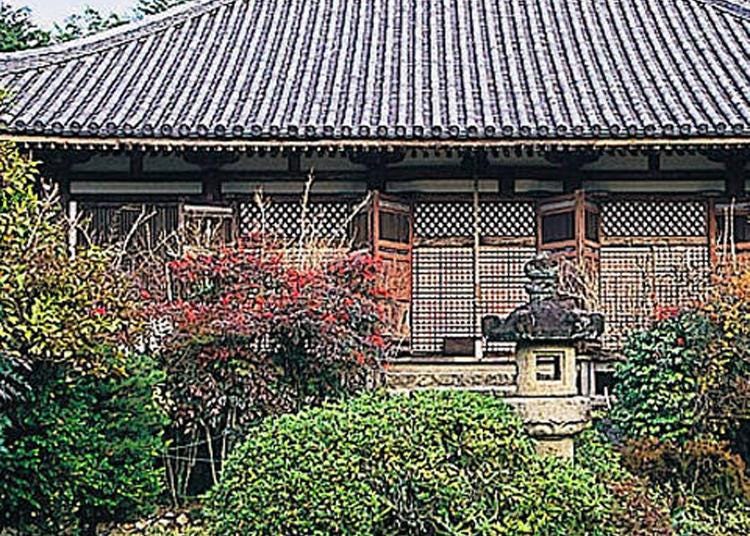
Following his abdication from the throne, Emperor Heizei transformed this area into his private retreat. Subsequently, his descendant, Ariwara no Narihira, inherited the land and initiated the establishment of a temple on this site. Narihira's personal contribution included the creation of a Kannon statue, a labor of love that he carved with his own hands. The grounds of this temple are adorned with designated important cultural properties, such as Narihira's crafted Kannon statue, a representation of the Five Great Myo-o, the main hall, and other architectural treasures.
Throughout the year, the temple's surroundings burst into vibrant bloom with seasonal flowers, including camellias and kadsura vines, serving as a living tribute to the memory of Ariwara no Narihira.
-

-
Address
517, Horencho, Nara-shi, Nara, 630-8113
View Map -
Nearest Station
Shinomiya Station (Kintetsu-nara Line)
14 minutes on foot
- Phone Number 0742-22-5278
-
Address
517, Horencho, Nara-shi, Nara, 630-8113
- Area
- Category
*Prices and options mentioned are subject to change.
*Unless stated otherwise, all prices include tax.
Recommended places for you
-

Kanzenkoshitsuyakinikutabehodai Gyugyu Paradise Sannomiya
Yakiniku
Kobe, Sannomiya, Kitano
-

Jukuseiniku-to Namamottsuarera Nikubaru Italian Nikutaria Sannomiya
Izakaya
Kobe, Sannomiya, Kitano
-
Goods
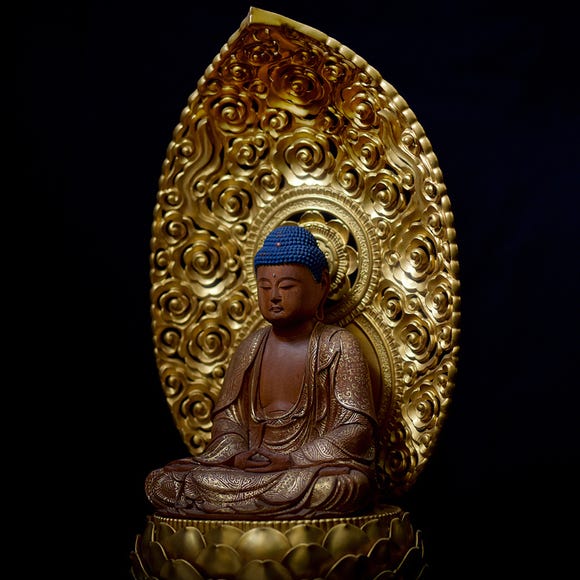
Yoshida Gennojo-Roho Kyoto Buddhist Altars
Gift Shops
Nijo Castle, Kyoto Imperial Palace
-

Osaka Aquarium KAIYUKAN
Zoos, Aquariums & Botanical Gardens
USJ, Nanko Port
-

ISHIDAYA Hanare
Yakiniku
Kobe, Sannomiya, Kitano
-

Kambei Sannomiyahonten
Yakiniku
Kobe, Sannomiya, Kitano
-

Where to See Fireworks in Osaka & Kansai (July–October 2025)
-

Yuzuya Ryokan Kyoto Gion: Enjoy Gourmet Dining in a 100-Year-Old Kyoto Townhouse (In-Depth Review)
by: Yotsuka Hizuki
-

2025 Osaka-Kansai Expo: Convenient Tips for a Stress-Free Visit
by: Kaori Kimura
-

Hyogo Prefecture Guide: Destinations, Activities, Travel Advice, Shopping & More
by: Kaori Kimura
-

Dorsett by Agora Osaka Sakai: Stay in a World Heritage Port Town Surrounded by History and the Sea (Newly Opened in 2025)
by: Yotsuka Hizuki
-

teamLab Announces New Permanent Kyoto Museum Opening in Fall 2025
Inspiration for Accommodations
-

Spacious Family Hotel in Namba: 20 Comfortable Stays for Family Fun
-
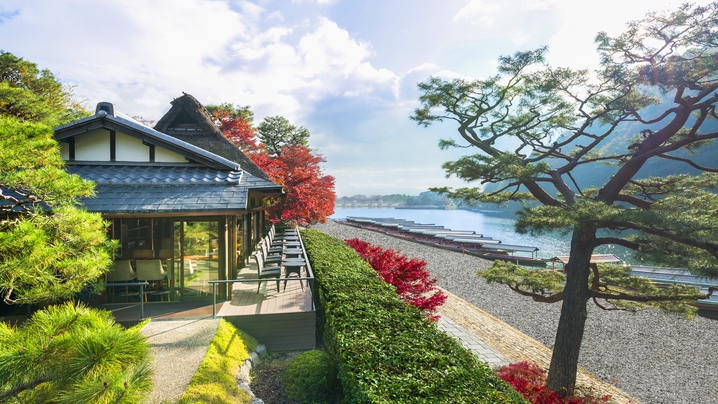
Charming Hotels to Enjoy the Spectacular Views of Arashiyama's Autumn Leaves from Your Room
-

Experience Stunning Views of Osaka Castle from Private Spaces: Top Hotels Near Osaka Castle
-
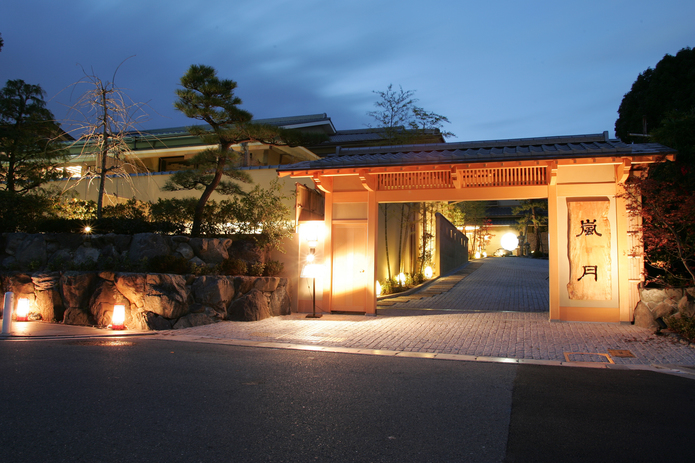
Recommended by Visitors! Arashiyama's Best-Rated Hotels
-

Family-Friendly Universal Studios Japan Hotel with Excellent Access
-
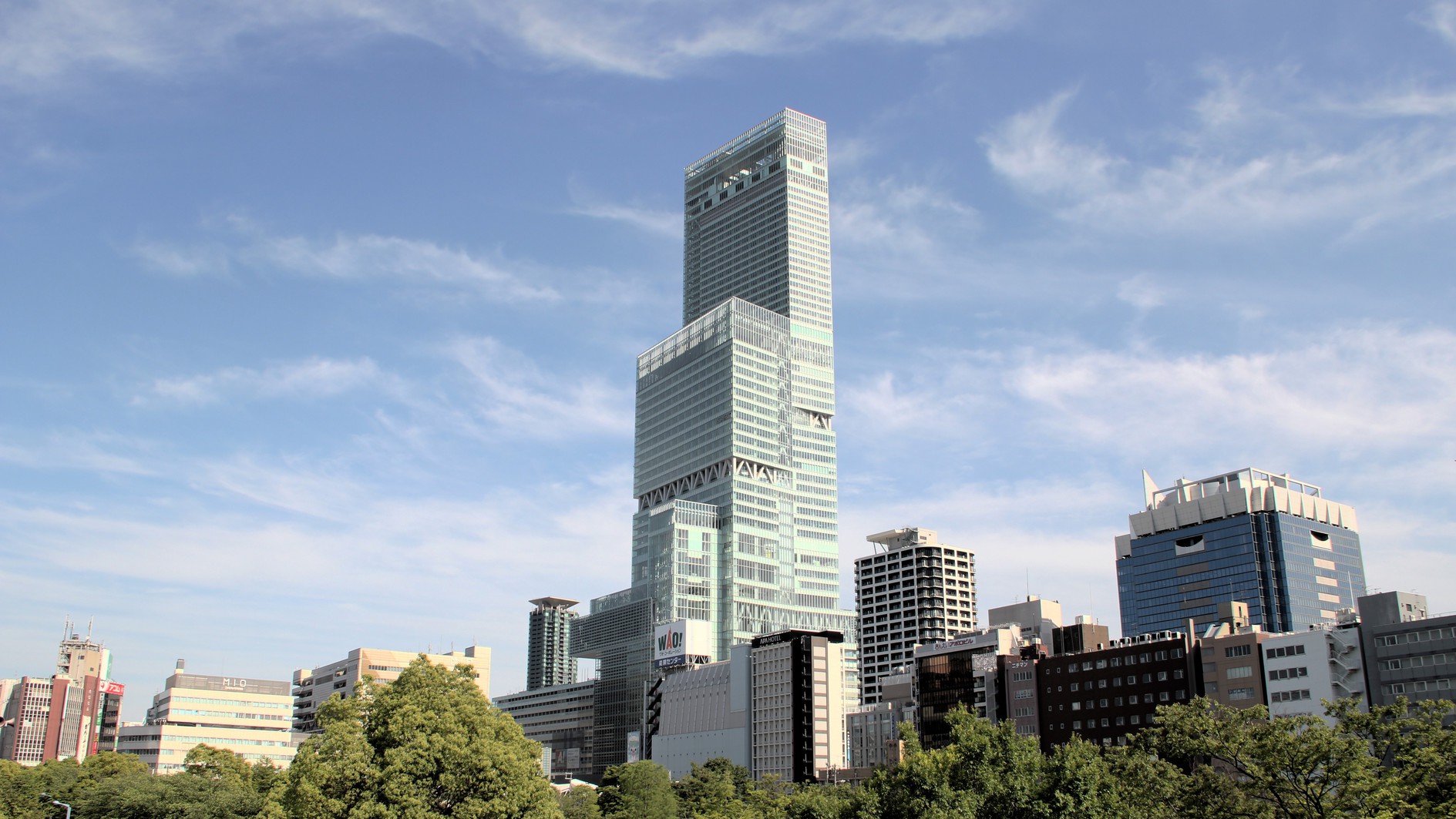
Enjoy a Comfortable Stay in Osaka! 10 Hotels with Convenient Airport Shuttle Services
-

Top 10 Recommended Hotels Near Namba Station with Great Access
-

Enjoy Night Views from Your Room! Recommended Hotels in Namba Area
-

Michelin Star Restaurants & More: 3 Best Okonomiyaki Shops in Dotonbori Osaka
-

Visiting Nara's Hasedera Temple: This 'Temple of Flowers' Is Home to Stunning Statues!
-

Rakusai: A Pilgrimage to the Green of Western Kyoto
-

Beyond Stunning! Kyoto’s Most Gorgeous Temples Explored!
by: Steve Csorgo
-

Inside Tenryuji Temple: Most Popular Attraction in Kyoto's Arashiyama Area
by: WESTPLAN
-

Inside Kobe Tower: Fun Things to Do at the Symbol of Kobe
- #best gourmet Osaka
- #things to do Osaka
- #what to do in kyoto
- #what to bring to japan
- #best gourmet Kyoto
- #new years in Osaka
- #what to buy in nanba
- #Visiting Osaka
- #onsen tattoo friendly arima
- #daiso
- #Visiting Kyoto
- #best japanese soft drinks
- #japanese fashion culture
- #japanese convenience store snacks
- #japanese nail trends















